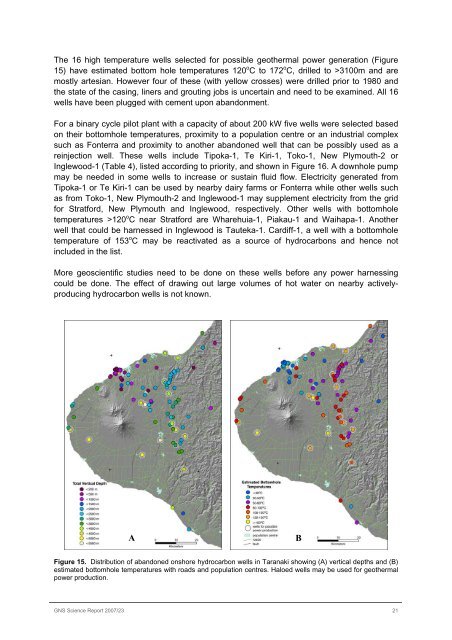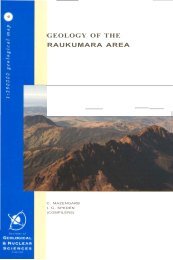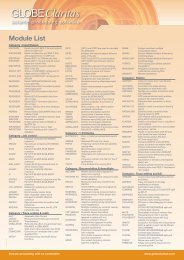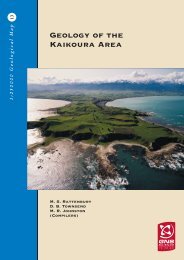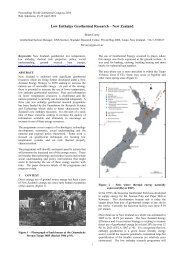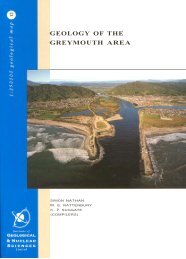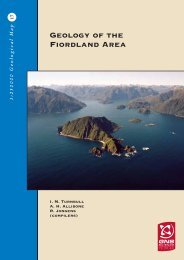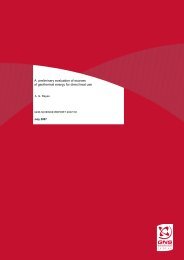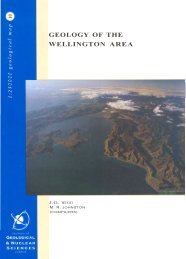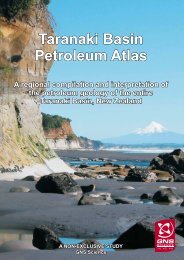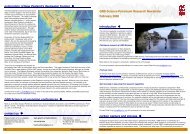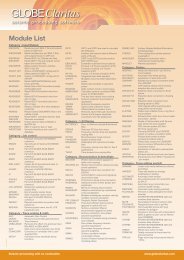GNS Science Consultancy Report 2006/0XX
GNS Science Consultancy Report 2006/0XX
GNS Science Consultancy Report 2006/0XX
Create successful ePaper yourself
Turn your PDF publications into a flip-book with our unique Google optimized e-Paper software.
The 16 high temperature wells selected for possible geothermal power generation (Figure<br />
15) have estimated bottom hole temperatures 120 o C to 172 o C, drilled to >3100m and are<br />
mostly artesian. However four of these (with yellow crosses) were drilled prior to 1980 and<br />
the state of the casing, liners and grouting jobs is uncertain and need to be examined. All 16<br />
wells have been plugged with cement upon abandonment.<br />
For a binary cycle pilot plant with a capacity of about 200 kW five wells were selected based<br />
on their bottomhole temperatures, proximity to a population centre or an industrial complex<br />
such as Fonterra and proximity to another abandoned well that can be possibly used as a<br />
reinjection well. These wells include Tipoka-1, Te Kiri-1, Toko-1, New Plymouth-2 or<br />
Inglewood-1 (Table 4), listed according to priority, and shown in Figure 16. A downhole pump<br />
may be needed in some wells to increase or sustain fluid flow. Electricity generated from<br />
Tipoka-1 or Te Kiri-1 can be used by nearby dairy farms or Fonterra while other wells such<br />
as from Toko-1, New Plymouth-2 and Inglewood-1 may supplement electricity from the grid<br />
for Stratford, New Plymouth and Inglewood, respectively. Other wells with bottomhole<br />
temperatures >120 o C near Stratford are Wharehuia-1, Piakau-1 and Waihapa-1. Another<br />
well that could be harnessed in Inglewood is Tauteka-1. Cardiff-1, a well with a bottomhole<br />
temperature of 153 o C may be reactivated as a source of hydrocarbons and hence not<br />
included in the list.<br />
More geoscientific studies need to be done on these wells before any power harnessing<br />
could be done. The effect of drawing out large volumes of hot water on nearby activelyproducing<br />
hydrocarbon wells is not known.<br />
A<br />
B<br />
Figure 15. Distribution of abandoned onshore hydrocarbon wells in Taranaki showing (A) vertical depths and (B)<br />
estimated bottomhole temperatures with roads and population centres. Haloed wells may be used for geothermal<br />
power production.<br />
<strong>GNS</strong> <strong>Science</strong> <strong>Report</strong> 2007/23 21


